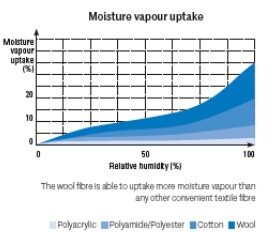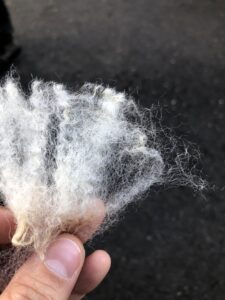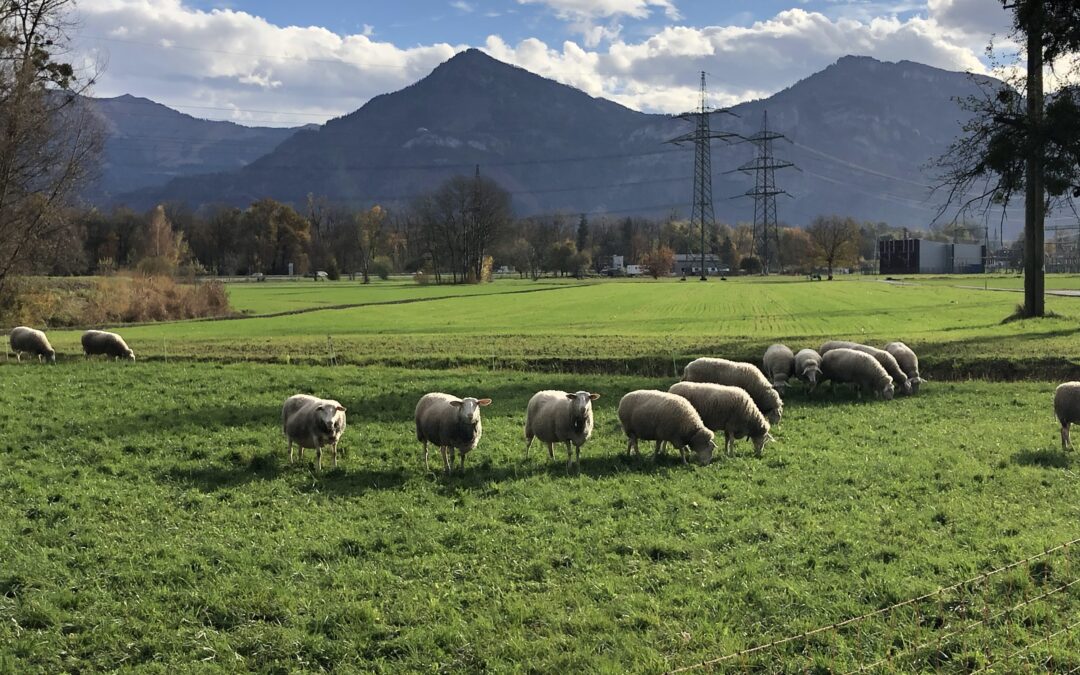Yes, wool is, without doubt, the multifunctional high-tech innovative fibre, due to centuries of fibre innovation by nature. Through its constant evolution over millions of years while living in extreme weather conditions to protect the sheep in those conditions – giving it the whole range of high-performance functionalities.
Thanks to its unique property profile, wool can achieve outstanding outcomes in modern clothing concepts.
To translate this unique versatility into sport language, wool is a sportsman/sportswomen doing decathlon/heptathlon. This sport is one of the most difficult, because you have to be the best in ten and seven different disciplines respectively. By training you can master it!
Wool has trained for centuries to master functionalities that comes now naturally! Without need to add special treatments or chemistry to bring one or another. It brings all of them in once!
Well, most important high-performance functions of wool are:
- Exceptional wear comfort
- High climate regulation capacity – thanks to high absorption capacity of moisture, while active we talk about sweat, wool transfers it away to the air
- Responsive – wool is capable to response intelligently to environment and body needs
- Naturally breathable – it’s structure plays here a crutial role, refer to previous blog
- Silky soft – merino wool fibres are extremely fine, flexible and elastic – this makes soft touch, luxurious comfort and elegancy
- Bacterial growth is inhibited, which also gives neutral smell – odour stays neutral during multiple wear times
- Naturally elastic – natural elasticity of wool supports stretching the clothes you wear while being in motion or active
- Insulation – protects even when wet
- Wrinkle resistant – it always returns to its natural shape
- Fire resistant – wools chemical structure makes it naturally flame resistant –it does ignite at high temperature and does not melt. For instance, polyester melts at 250-290°C and nylon between 160-260°C
- UV resistant – wool provides for centuries the protection from sun not only for sheep. It absorbs UV radiation to protect wearer or sheep. Hence, it is suitable for all outdoor activities.
Above, the intention was to keep “only” ten wool high-performance functionalities. Therefore, following sub-group represents additional performing functionalities which have important role because of there natural performance charakter. At those meets wool Bio-origin, renewability and biodegradability with wear performance and care. and wear and attention. They are:
- being Natural – product of sun, rain, air, and grass
- Biodegradable – like a human hair and being therefore natural fertiliser – regenerative agriculture
- Renewable – “grows” year-by-year, apparently sheep muss be shorn
- Easy to wear – it is just up to you for which activity you choose to wear wool – the performance is always delivered
- Easy to care – this feature is maybe the most important for all women they do laundry. For example, my wife is always searching for stinky T-shirt but there are any.
Now, just briefly about few of those functions.
Exceptional wear comfort and Silky soft touch
As written in one of the previous blogs, the fibre fineness indicates the soft touch. The lower the number of microns, the finer and softer the wool fabric. Merino wool fibres are about 16 microns fine. Comparing to human fain hair which is about 50 microns, merino is more than 3 times finer, and therefore softer than human hair.
Moisture management or climate regulation capacity
Wool structure brings a very specific feature to wool – outer surface is hydrophobic – it repeals water, and inner part which is hydrophilic – it absorbs and manages the moisture. Because its unique morphological structure made of scales – like a fish skin – it allows manage moisture in unbelievable manner. It absorbs and releases moisture when it is required, and that is up to 35% to its own weight in moisture without feeling damp, clammy or wet to the touch. In contrast to synthetics, the wool provides warmth even when wet, without cooling effect. Cooling effect is provided during warm summer days. That is the result of century’s evolution to provide sheep either up in the mountains or down in valleys the right thermal comfort or temperature regulation. The regulation has, of course, its limit and puts its wearer under sweat (apart of high-intensity motion or activity) but this is regulated and managed with wool fibre itself. The most extreme condition is at direct sunshine.

Easy-to-care or self-cleaning character
Let’s imagine barbequing in garden and wearing wool T-shirt. At the end all T-shirts, no matter from what material made (wool including), smell after whatever you grilled. Right? However, T-shirt made of wool you can leave outdoor overnight to absorb air humidity. During this process, the molecules of water push molecules of unpleasant odour away. Basically, they replace them. Once such replacement is done, the T-shirt after right conditions starts to dry. The moisture evaporates. Either left outdoor or indoor to become dry, it does not smell after grilling anymore, it is self-cleaned, and is ready to wear without laundry. Such a circles can be repeated more times, until you decide to wash it again. There is a buffer capacity of the wool fibre incl. salt marking. Usually, in summer you will not be able to do that many circles as in rest of year seasons.
The same is valid also while exercising or being active. The T-shirt does not need to be washed after each activity, moreover, after quick dry you can just wear it while pick your child from the school, going out with friends for a beer or coffe, or after yoga you can live a second meditation by hiking to enjoy the scenery of nature. One example can be found at ALPBOCK YouTube.
Temperature regulation
Wool is superior active and responsive fibre, which comes from its inherent composition and structure. It is capable to response intelligently to environment and body needs because of its high thermal regulation capacity. It merges together the insulation capacity with breathability and moisture management.

Insulation
Crimp (wave) in the wool fibre traps air (providing insulation) which leads to keep us protected. Together with thermoregulation performance, the apparel made of wool will protect and keep us warm even when wet.

Odour neutrality.
It is known that human sweat is odour neutral. The unpleasant odour we know while being in motion or active is driven by bacteria growth on the sweat of wearing clothes. Those bacteria can form even biofilm that is difficult to remove. So, bacterial colonisation and growth in textiles is a dynamic phenomenon.
The surface of raw wool fibre is covered by a natural, water-repellent membrane. Therefore, wool has a naturally strong resistance to microbial attack as showed in following scientific study of antibacterial efficacy towards several bacterial species.

